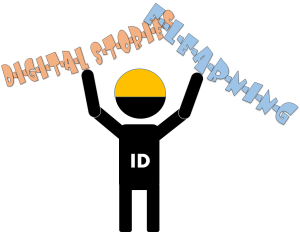Recently, I received a mail from a friend of mine telling me about this online MOOC on Powerful Tools for Teaching and Learning: Digital Storytelling. I checked it up, went through the course overall details and decided I was going to be a part of it. It turned out to be a good decision! So I decided though a bit late to post about the course as it progresses.
Check out the MOOC (Massive Open Online Course) course page here and accompany course website here.
Introduction to Digital Storytelling
Digital storytelling is the practice of using computer based tools to tell stories. This is telling audio visual stories, stories that is both watched and listened to, and that was created using the computer and it’s tools. Digital stories usually include images, text, audio narration, video clips and background music.
Everyone loves stories. Everyone tells them and listens to them consciously or unconsciously and it’s power can be employed to pass a message across to learners of various kinds. Digital stories can be useful while teaching to bring a difficult concept or a particular lesson down to simple engaging visuals, that students can identify with and understand. These stories are useful for both formal and informal learning. Either for classroom students or general learners, or company workers or visitors in a new land; anyone who needs to learn something could be told in a story and an interesting one at that!
Good digital stories usually last between 2 – 10 minutes and takes the following seven elements into consideration. A definite point of view of the storyteller, a dramatic question to be answered, emotional content capable of touching the listeners, the gift of the uniqueness of your voice, the power of a suitable soundtrack, proper economy of your words and content and the dynamics of correct pacing.

Three (3) types of Digital Stories
1. Personal Narratives
Help us reflect on where we’ve been, what we’ve learned and illustrate our journey of discovery. This kind of stories are usually the most common and personal. Stories of a first day at work, a beloved family member, a mentor or hero that touched your life, a dreaded day etc. are example stories that fall into this category. See examples here.
2. Historical Documentaries
Stories that display a historical event that student will use in the classroom. For example, stories of a cultural event, a historic place or person, stories about the great wall of China, the US twin tower etc. all could be told to teach students or learners in general about a particular historical event. See examples here.
3. Informative stories (Content area).
These kind of stories provide definite and specific instructional content in various subject matter like maths, engineering, management, biology, economics etc. These kind of stories pick a particular subject or topic and tells a story out of it to help students understand the concept better. See examples here.
The Digital Storytelling Process.
1. Choose a topic: Decide on the topic or idea you want to tell a story about. What kind of story will it be and how will it affect those who watch your story. A good story begins from a good topic.
2. Write a script: A good story has a good script behind it. The script is essentially your audio narration and what is being heard. It must be logical, interesting and able to stand on its own without the digital aspect.
3. Draw your storyboard: Your storyboard is the plan of how your story will be created and arranged. This is where you put together the logical progression of your design and story.
4. Gather/create resources: Images, videos, background music:- Your story is digital and you’ll need audio-visuals for your digital story. So this is the phase to gather or create your story resources that will accompany your well-written script, to drive home the content to your listeners.
5. Record audio narration: This is where you record your audio narration or script. Recording can be done either on your laptop or recording devices or mobile devices as is available to you. A passionate, emotional and yet natural voice is a great addition to the story!
6. Put it together: Via appropriate tools, the bits are put together, mixed, edited and produced as one video file.
7. Publish and share: Share your story with those concerned. Upload to you-tube or make available for your students or learners.
8. Evaluation/Feedback: Evaluation is useful to get proper feedback on your design and to help in future designs. It is important to share your output with professionals and content experts to receive appropriate feedback.
So that’s a fair overview of the general concept and entire process of creating a digital story. I will then attempt to post weekly on the progress (I hope I really can), as the course proceeds. The course requires us to follow through with a story in mind, so that by the end of the 5 weeks, every participant would have created a story…
More about my story at the next post. In the mean time, watch example stories here.
Questions to Consider.
Could Digital Stories in any way help create content for students?
Is there any relationship between Digital stories and e-Learning?
Shouldn’t teachers and trainers consider digital stories as a great tool for e-learning?
And with tools available to embed interactions like quizzes to a video, do you not think this is indeed a powerful tool?
Leave your comment below, let me know what you think!
Next Post in this series: My Digital Story: Topic, Script and Storyboard

Leave a comment